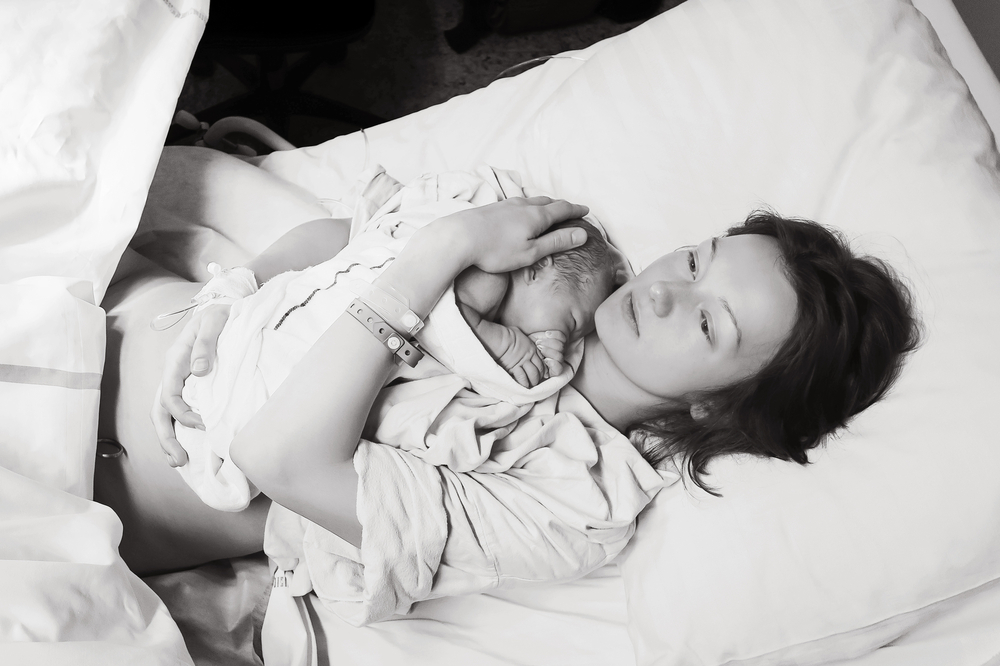Ob-Gyn Case Study: Is retained placenta after birth a negligence issue?

NPUSA staff ob-gyn specialist, Nancy Saucier, recently screened a case involving retained placenta or Products of Conception (POC).
Case Presentation:
The patient was admitted to Labor & Delivery on September 20. Healthy twins were born via low transverse C-Section followed by bilateral tubal ligation. The physician who delivered the infants noted in the Procedure Note that the “placenta” was intact. She did not mention a second placenta. The physician stated that the uterus was exteriorized & cleared of all clots & debris and that all sites were hemostatic (i.e. bleeding was controlled).
Examination & Diagnosis:
The pathology report became available 3 days later, on September 23. It noted the presence of two placentas. The fetal portion (chorionic surface) of Placenta A was fragmented and the maternal surface was extensively disrupted. The chorionic surface of Placenta B was complete but the maternal surface was focally disrupted.
Treatment & Outcome:
The patient stayed in the hospital an extra day due to a persistent headache. She was not sleeping well or drinking much. Her laboratory studies and blood pressure were normal & she was discharged 4 days after the birth, on September 24.
Five days later (postpartum day 9), the patient was readmitted to the hospital with complaints of a headache, abdominal pain, vomiting, and pain at an 8 on a scale of 1-10. Her blood pressure was elevated and she had fluid in her lungs. Magnesium sulfate, labetalol & hydralazine were administered to normalize the blood pressure. The diuretic Lasix was administered to decrease the fluid in the lungs. A Cat scan of the abdomen/pelvis showed an enlarged, edematous (swollen) uterus. There was also vascular material in the fundal portion of the uterus. There was a concern it might be retained Products of Conception (POC) or placental tissue. An ultrasound of the pelvis opined that the material was thought to be retained POC.
The admit diagnoses were retained Products of Conception (POC), pre-eclampsia (pregnancy-induced hypertension) with severe features, and pulmonary edema (fluid in the lungs). The following day, on September 30, a D&C was performed and the retained matter was removed. The physician’s procedure note indicated that a small amount of POC had been found during the procedure. The pathology report noted that the specimen of tissue removed during the D&C contained necrotic and inflamed tissue. The patient remained in the hospital another day and was discharged to home with stable blood pressure and a normal temperature the next day.
Was the physician’s failure to completely remove the placenta a negligent omission?
It might appear that this was substandard care in view of the fact that the physician did not mention two placentas and that she documented that she had cleared the uterus of all clots and debris.
MEDICAL FACT:
Retained placenta after a Caesarean section is a rare phenomenon, occurring in only 0.16% of cases.
Case Conclusion:
The placenta is normally expelled by uterine contractions independently after the delivery. Even in the setting of a C-section, uterine contractions will cause the placenta to release from the uterine wall. Although the uterus retained a small amount of POC, the literature review indicated this would be considered an unfortunate complication of the birth process as opposed to negligence. Additionally, the patient did not demonstrate any signs or symptoms of a retained placenta during the first hospitalization. When she did demonstrate clinical symptoms that pointed to a retained placenta, she was immediately hospitalized and treated promptly, allowing her symptoms to quickly resolve.